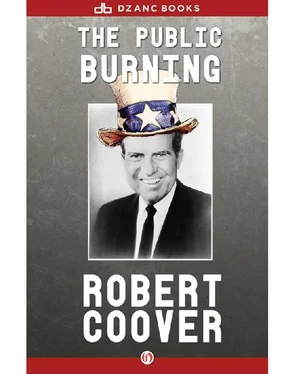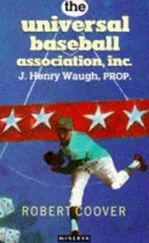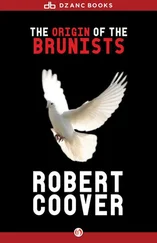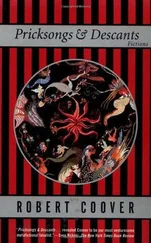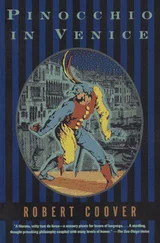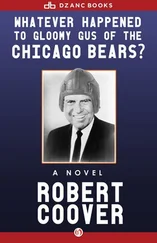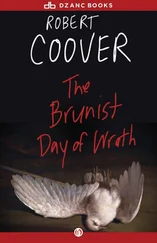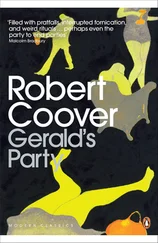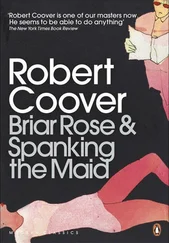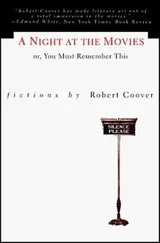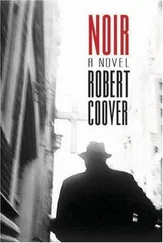There are those who commune directly with the words, caressing them blearily with their sleepy eyes or swallowing them like antacids, leaning against the slabs for support whenever the earth should rock, but doubting they represent anything more than themselves. Others gamely seek the space between, likening these cryptic hoarstones to clues in the daily crossword puzzle (and look what’s there today, first clue, 1 Across: Burning Tree activity ), signals in an ordered maze, a possibly more or less ordered maze. And perhaps that was why — the tenacious faith in the residual magic of language — this monument was erected in the first place: that effort to reconstruct with words and iconography each fleeting day in the hope of discovering some pattern, some coherence, some meaningful dialogue with time. But so enormous a shrine is it, so prodigious a task just to keep the translation of gesture into language flowing, that all consciousness of any intended search for transcendence must long ago have disappeared and been forgotten, leaving all visionary speculations to the passing pilgrim. Yet even this extravagant accretion of data suggests a system, even mere hypotyposis projects a metaphysic. “Objectivity” is in spite of itself a willful program for the stacking of perceptions; facts emerge not from life but from revelation, gnarled as always by ancient disharmonies and charged with libidinous energy. Conscious or not, The New York Times statuary functions as a charter of moral and social order, a political force-field maker, defining meaningful actions merely by showing them, conferring a special power on those it touches, creating the stations of life that others might aspire to. And why not? How else struggle against entropy? PACE AT WESTBURY / TO MIGHTY GRATTAN. N.Y. Life Officers to Be Elevated . WASHINGTON ANGRY. Fail to Find a Bomb in School. HOUSE PURCHASED / FOR WORKING GIRLS.
They often come here, working girls, prowling in the Classifieds, searching for fairy godmothers, magic carpets, the secret name of that gold-spinning gnome. Bombers poke about, open-faced and friendly, looking for targets. Politicians, too. Pensioners and passing tourists. Uncle Sam also comes from time to time, mostly just to show off. And the Phantom, though he never shows his face, can often be glimpsed in the dark shadows behind the slabs, exposing his hindend and farting damply. Judge Irving Kaufman, like so many, comes here out of duty, essentially oblivious to the Phantom’s impieties, seeking what he would think of as a balanced view. One eye on New York, the other on the World. Tammany Hall is his metaphorical link, just as it is Irving Saypol’s. Governor Tom Dewey, whose connection is the Republican Eastern Establishment, those same International Bankers who have put Dwight David Eisenhower in the White House, rushes here daily, shoulders bulled forward, fists clenched, chewing his moustache, ready for a fight, looking down his nose, or up his nose, at panic-stricken creatures like Mayor Vincent Impellitteri or Mother Luce (her son TIME whistles through here like a thief in the night). As for Eisenhower, he snorts in amusement at all this misplaced sanctitude and steers clear — a man could lose hours in such twaddle; but his Vice President, Richard Nixon, does come here often, pretending disdain (all right, so it’s the famous organ of the Eastern Establishment, it’s not that big), yet not without awe and a certain practiced self-effacement. After all, he is something of a stranger here, and he understands and respects the codes for sojourning in alien lands. Not so, Joe McCarthy. He parades through like a peacock, sporting all his medals, and jabbing his stubby fingers in outrage at any signs of pink stains on the face of the monument (some say these odd blotches are the blood of Innocents, others claim that Roy Cohn and David Schine come at night and sling them there, but most are confident that the Senator knows what he’s shouting about).
Even the Rosenbergs turn up. Disparagingly, fearfully, yet eagerly. A sign perhaps…? Ethel wanders dreamily through the entertainment section, purses her lips disapprovingly at the fashion ads, falls into a quiet trance before the Letters to the Editor. Julius, more faithful — a regular dues-payer, in fact — presents himself diligently at Page One every morning at ten o’clock, pressing his nose against the great slabs, frowning through his wire-rimmed spectacles at all this irrelevant history, weeping softly to himself to see such monumental dignity conferred on a world so mad. These bitter tears blur his weak vision, and he is left with little more than the vague sense of a great gray threat, remote, impenetrable, yet for that all the more menacing. Often enough, through his tears, he has discovered himself here on these slabs, or someone they said was himself (“the accused,” they call him, but the words keep melting and blurring on him, and what he sees there is “the accursed”), but he has not recognized his own image, grown gigantesque, eviscerated, unseeing: it’s like looking into some weird funhouse mirror that stretches one’s shape so thin you can see right through it. He used to think that if he could just find his way onto these tablets everything would be all right, but now he knows this is impossible: nothing living ever appears here at all, only presumptions, newly fleshed out from day to day, keeping intact that vast, intricate, yet static tableau —The New York Times ’s finest creation — within which a reasonable and orderly picture of life can unfold. No matter how crazy it is.
Oh, he shouldn’t be surprised, he’s a Marxist and has nothing but contempt for the bourgeois capitalist press, yet paradoxically he is also somehow an Americanist and a believer in Science and Freedom and History and Reason, and it dismays him to see cruelty politely concealed in data, madness taken for granted and even honored, truth buried away and rotting in all that ex cathedra trivia — my God! something terrible is about to happen, and they have time to editorialize on mustaches, advertise pink cigarettes for weddings, and report on a lost parakeet! Ah, sometimes he just wants to ram the goddamn thing with his head in an all-out frontal attack, wants to destroy all this so-called history so that history can start again. But even if he martyred himself like that, what would it amount to? just another thread in the fabric, another figure in the eternal tableau, one more little exemplary parable for the hucksters to amuse themselves by, sell a few more books and papers. So much for terrible happenings, good intentions. Two years ago, he came here and stole away, on July the Fourth, a copy of the Declaration of Independence. It was very heavy. Perhaps he thought he could beat down his cell walls with it. But though he pressed his whole body against it until it turned yellow with his fear, he was unable to read what it said. He tried to pretend, but he got mixed up. “It is interesting to read these words,” he wrote bravely to Ethel, “concerning free speech, freedom of the press and of religion in this setting. These rights our country’s patriots died for can’t be taken from the people even by Congress or the Courts.” Perhaps, he would often think, squinting helplessly at the quirky script, I need new glasses.
Today, in any case, he is not here, they are not here. Their cells have been stripped and so have they, and they have been moved into the Halfway House in anticipation of the Times Square spectacular, and subsequently, though they will presumably miss this, their own climactic hour on the great slabs. Ethel is now clothed in terrycloth slippers and a cheap green dress with white polka dots, a frowzy second cousin to the one the model’s wearing on Tablet 25; Julius has been dressed in a loose T-shirt, buff-colored slippers, and fresh khaki pants. Nevertheless, the Rosenbergs have not lost hope; in fact, they feel pretty certain they’ve won the day, and all these execution warm-up rituals are just one more last-ditch effort by the government to frighten them into confessing. Well, it won’t work.
Читать дальше
